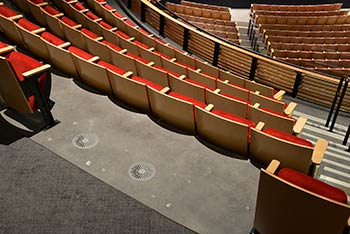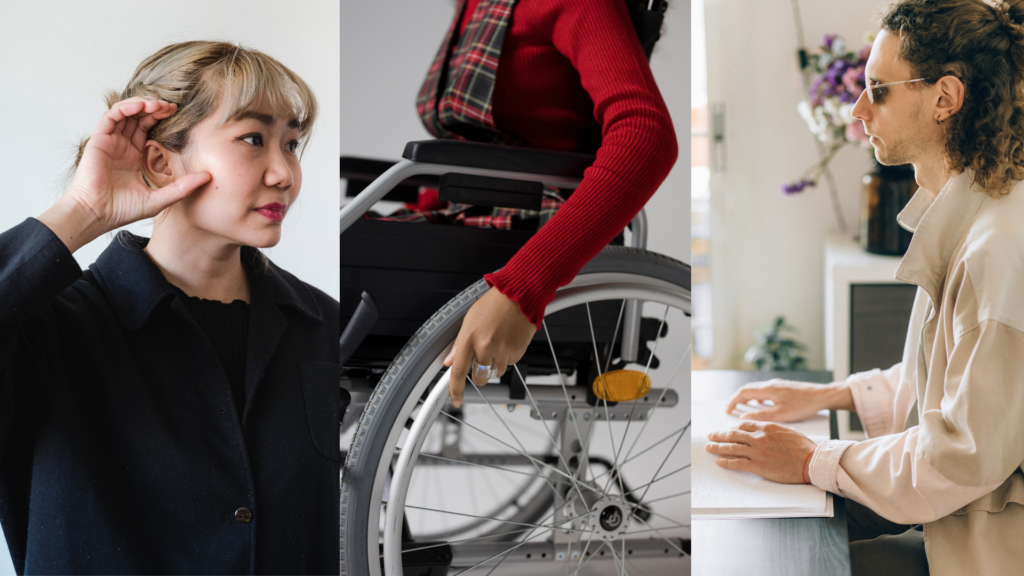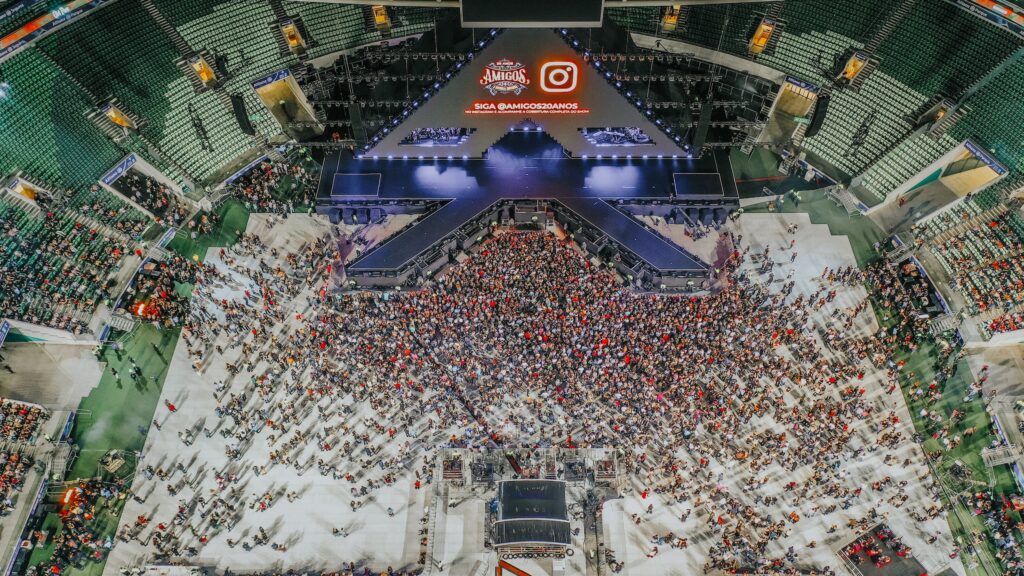Live events, such as concerts and festivals, have the power to bring people together and create amazing memories. However, many events often overlook the importance of accessibility planning for their live events. Without it, they may unintentionally be excluding individuals with disabilities and diverse needs. By ensuring that your live events are inclusive and accessible to all audience members, you can foster an environment of diversity, equality, and acceptance, while also enhancing the overall experience for everyone involved. In this blog post, we will explore various strategies and considerations in accessibility planning to make your live events accessible to everyone, ensuring that no one is left behind.
Accessibility Planning for Live Events Begins With Understanding Accessibility
The first step in making your live events accessible is to recognize the significance of inclusivity. Accessibility planning is not just about complying with legal requirements; it’s about embracing the diversity of your audience and demonstrating respect for everyone’s right to participate in and enjoy the live event.
Accessibility is defined as “the quality of being able to be reached or entered” by the Oxford Dictionary, identifying that making something accessible is making it able to be reached or entered, whether it be reaching the top story of a building or being able to enter an entertainment venue. Online accessibility has been defined by The Bureau of Internet Accessibility as having Four Principles: Perceivable, Operable, Understandable, and Robust. How could these principles go further than just your website and influence your whole event accessibility planning?
- Perceivable: At the most basic level, your audience needs to be able to acknowledge that there is information for them to be receiving. Falling under this principle would be text-to-speech offers on your website, alt-text on images, and anything else that could concern someone with visual or hearing disabilities.
- Operable: Your website must be something that anyone, regardless of disability, can access and navigate through. For disabled people, this means providing enough time to read content on a page, not designing content that can elicit a sudden reaction (flashing lights, sudden images), and making sure all navigation can be done through a keyboard.
- Understandable: Your audience must be able to comprehend the information you are giving to them. On your website or in your venue, make sure prominent information is readable (font is simple with large lettering), and offer assistance to those who need it in understanding.
- Robust: People with accessibility concerns don’t all communicate the same way or use the same technology. For your website, be sure it’s accessible with different types of browsers, as well as by screen readers and other assistive technologies. In your venue, make sure you have someone designated to help out with any assistive technology issues, especially if there are guests who cannot communicate verbally and rely on this technology to communicate.
Accessibility is more than a box on a to-do list. In order to create a safe and welcoming environment, accessibility planning must be a part of the overall event planning from the beginning. Accessibility doesn’t just benefit those who rely on it, but it impacts everyone. Making your event more accessible is just making it a more comfortable and enjoyable experience for everyone.
Many disabled people are disheartened from going to live events because of accessibility concerns. Any disabled audience member would be thrilled to see your event is taking accessibility seriously and that you really want to understand their needs. This shows your audience you care, which not only helps your ticket sales, but your reputation overall as well. Though, this should not be the main idea. First and foremost a genuine caring for those affected needs to be present in incorporating accessibility planning for live events.
Delegating Accessibility Planning
Having an “Accessibility Team” is an approach that many event organizers use. There is a set number of people who deal with the accessibility aspects of the event to ensure that these issues won’t get overlooked by a larger group. This team should consist of individuals with knowledge of accessibility, disability awareness, and any regulations required for the venue. These team members can ensure that accessibility planning is a core aspect of the event’s design. Additionally, event organizers can seek help from external experts in planning accessibility accomodations, like noted below. Disability organizations, consultants, and accessibility experts can all assist in making your event more inclusive and well-rounded.
The accessibility team or experts should conduct an accessibility review of all aspects of the event, from the venue selection to the event schedule. This review should encompass physical accessibility, such as wheelchair access, ramps, elevators, and seating arrangements. It should also address sensory considerations, like visual and auditory accommodations for individuals with impairments. Furthermore, cognitive accessibility and communication needs should be assessed, ensuring that event information is presented in a clear and understandable manner.
In addition to incorporating accessibility planning into the event planning process, it is essential to raise awareness and provide training to all staff, volunteers, and vendors involved in the event. Proper disability awareness training helps staff to understand the needs of individuals with disabilities, how to communicate effectively, and how to provide assistance when required.
According to the Disability Equal Access Consulting group, “Equal Access”, has a Universal Design Consultation Process.
- Identify what the situation is– understanding what the event is, who will be performing, where it will be held, goals of the event, etc.
- Define the audience– figuring out potential audience demographics before even selling tickets is essential when event planning to make sure your event fits your audience’s needs. After tickets have been sold, be sure to make note of any accessibility concerns from ticket-buyers so that your accessibility team can combat any issues.
- Involve the consumers– get feedback from your disabled audience to figure out how you can accommodate their needs.
- Consider the standards– this is when it’s important to have experts in accessibility and regulations involved. Figure out how you want your event to be run using universal design rules and venue regulations.
- Apply the standards– apply what you worked on in the previous step.
- Plan for accommodations– now that the basics are set for your event, figure out how you can add or modify things to make the event more accessible.
- Train staff members– like previously mentioned, it is super important that all staff members understand accessibility in case of any situations that may arise.
- Evaluate– after the event, get feedback and look at data to help understand how useful your steps toward accessibility really were for your audience. This will help you to decide how to go forward with accessibility planning for future events, what steps should stay and which can go.
Planning accessibility cannot be a job for one person. It is important to have multiple personalities working on making your event the best it can be for everyone despite ability so that nothing gets overlooked
Selecting an Accessible Venue for Live Events

When choosing a venue, there are several key factors that event organizers should consider to create an accommodating and welcoming environment for all attendees. Here are just a few examples of things that should be considered when choosing a venue:
-
- The presence of wheelchair ramps and elevators is fundamental for individuals with mobility challenges. Ramps should be well-maintained and easily accessible. Elevators should be available anywhere that has stairs so that everyone can get to every part of the venue they need to. Additionally, signs and clear imagery can help attendees locate these accessible routes.
-
- Accessible restrooms in the venue are an absolute necessity. These restrooms should be spacious to accommodate wheelchair users and equipped with appropriate handrails and accessible sinks. Ensuring that these restrooms are well-marked and easy to find is equally important.
-
- Designated seating areas for individuals with mobility challenges should be placed to offer optimal views and comfort. These areas should not obstruct the view of the stage or performance and should be located near accessible pathways. Reserve these spaces for individuals who specifically require them to ensure those who need these spaces get them.
-
- Clear and inclusive accessible emergency plan should be in place by the venue. It should include designated evacuation routes for individuals with disabilities. Well-trained staff members should be available to assist attendees with mobility challenges during emergency situations.
Cornell University’s Human Resources Department put out an “Accessible Meeting and Event Checklist” that they use for their large events and meetings. Clearly, not all of it will apply to a live music event, but they still bring up good points. Typically, they give this checklist to attendees to later turn back in to determine if they need to make any accommodations for any guests, but as this isn’t quite a viable option for a large event like a music festival or concert, it’s important to keep all of these in mind while planning your event:
- Assistive listening devices
- Captioning or interpreting
- Reserved seat
- Large print
- Wheelchair access
- Scent-free room
- Lactation room
- Gender neutral bathroom
A commitment to accessibility in venue selection demonstrates respect for the rights and needs of individuals with disabilities, fostering an atmosphere of diversity, equality, and inclusion. As event organizers prioritize accessible venues, they contribute to the establishment of an event culture that celebrates the uniqueness of all attendees, ensuring that live events truly become spaces for everyone to enjoy.
Ticketing
Creating accessible and inclusive ticketing options is a crucial step in accessibility planning to ensure that individuals with disabilities and diverse needs can easily attend and enjoy live events. By offering a variety of ticketing options, event organizers can ease financial and logistical barriers, making it possible for a wider range of consumers to attend the event.
Making sure people have the option of choosing a wheelchair-accessible seat in the venue ensures that all audience members will be comfortable in their chosen seat. As well, offer “companion seats” tickets that allow the companion to sit adjacent to the individual with a disability, ensuring that they can experience the event together. Such seating arrangement encourages people with disabilities to attend the event as they can bring someone with them and not feel completely isolated or alone.
Additionally, make sure that the online ticketing platform used for the event is accessible to individuals with disabilities. The ticketing website should comply with the P.O.U.R (perceivable, operable, understandable, robust) web accessibility guidelines mentioned above, making it easy to navigate for screen readers and other assistive technologies. This allows individuals with disabilities to independently purchase tickets and access essential event information.
Be sure to include accessibility information prominently on the ticketing platform and related promotional materials. Provide details about accessible seating options, companion tickets, quiet areas, and any other relevant accessibility features.
This communication ensures that attendees are well-informed about the available accessibility accommodations before purchasing their tickets. Finally, flexible ticketing policies to accommodate the needs of individuals with disabilities or unexpected situations is imperative. For example, consider refund or exchange policies that allow attendees to adjust their plans if unforeseen circumstances arise.
While accessibility planning may seem like an obvious consideration to some, it is often overlooked or under emphasized by many event planners. The oversight of adequate accessibility planning can unintentionally exclude a portion of the population from participating in live events. It is imperative to raise awareness about the importance of planning for accessibility and its role in creating a truly inclusive and welcoming event environment.
The information presented in this blog post provides a quick overview of the key aspects of accessibility planning for live events. However, it is essential to recognize that accessibility encompasses a wide range of considerations, and the needs of individuals with disabilities and diverse backgrounds are complex and multifaceted. A comprehensive approach to accessibility requires a deeper understanding and a thorough accessibility planning process.
Next time you or your company are planning a large event, make sure you’re considering who your audience will be to every extent. If you had a disabled family member who wanted to go to an event, you would want them to be able to do so comfortably. Make your event a comfortable space for everyone, not just those who need it. Accessibility is a benefit for everyone, not just those who are disabled.
To learn more about event production and management visit TSE’s Events Management webpage.






